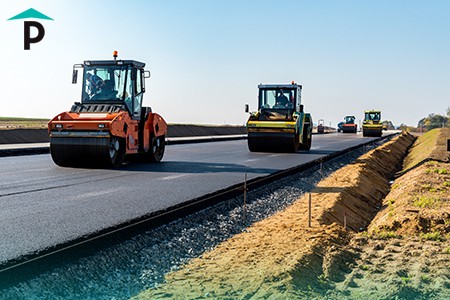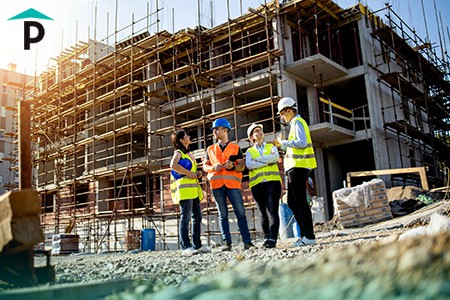Land development bonds, land improvement bonds, land grading bonds, and other bonds on the list below are all forms of subdivision bonds. These bonds are sometimes optional and sometimes required to ensure that construction work is carried out to an acceptable standard.
Call: (844) 612-7238 to get started
A land development bond is a type of subdivision bond required for some construction projects. In some cases, a land development bond is a stipulation to protect the interests of clients, businesses, or government agencies. At other times, they’re optional but still recommended.
As with a subdivision bond, a land development bond guarantees to governments and states that land development is in line with public interests and legal requirements. Development requirements might include things such as streets, sidewalks, or drainage and sewage systems.
Land Improvement Bonds
A construction company looking to develop a piece of land might well benefit from a land improvement bond; they might also be required to issue land improvement bonds to guarantee the standard and completion of any land development and construction they intend to carry out.
Examples of land improvement projects include new water supply systems, drainage systems, sewage systems, public roads, and more. Companies looking to improve land might not be able to begin work until they have secured a subdivision bond such as a land improvement bond.
Land Grading Bond
 Governments and local authorities need to ensure that buildings are constructed safely; that’s why land grading bonds are usually required. Before construction begins, land needs to be leveled or set at a prescribed level so buildings withstand the property’s weight and conditions.
Governments and local authorities need to ensure that buildings are constructed safely; that’s why land grading bonds are usually required. Before construction begins, land needs to be leveled or set at a prescribed level so buildings withstand the property’s weight and conditions.
Typically, grading bonds are used for transport infrastructures and new buildings, especially ones with some public application. There are three parties involved in a grading bond agreement – the obligee, the principal, and the surety company. These parties work together to create a legal framework and guarantee the grading requirements for new construction work.
Site Development Bonds
A site development bond is another form of subdivision bond. Site development refers to changes in infrastructure such as sewage system upgrades, drainage system installation, landscaping, and the development of roads, streets, and utilities that have public applications.
Site Improvement bonds differ from performance bonds. Performance bonds protect the principal from non-payment by the obligee, so if there is no surety bond or it goes unpaid, work can stop or fail to start. In the case of a site development bond, the work must be completed regardless of the developer’s ability to pay, so they are sometimes called completion bonds.
Performance Bonds
When it comes to municipal building projects, performance bonds are often required. A performance bond is a three-way contract between the surety company, the obligee, and the principal contractor to protect the interests of the owner. A performance bond is a guarantee that work will be carried out to standard and may not go ahead without an agreement in place.
Bid Bonds
When a construction company submits an application to a government agency for development permissions, it may have to submit a bid bond along with it. A bid bond is drawn up by a surety company; it is a legally binding contract that guarantees work will be completed to the standards set out in the application. Once accepted, there is a legal responsibility for project completion.
Payment Bonds
 Payment bonds are another type of land development bond, but instead of guaranteeing the completion of a project, these bonds guarantee payment to involved parties. A payment bond is created by a surety company and issued to contractors; it is a legally binding contract that reduces the risk of non-payment. These bond types are also known as construction bonds.
Payment bonds are another type of land development bond, but instead of guaranteeing the completion of a project, these bonds guarantee payment to involved parties. A payment bond is created by a surety company and issued to contractors; it is a legally binding contract that reduces the risk of non-payment. These bond types are also known as construction bonds.
Contract Bonds
Contract bonds are a form of subdivision improvement bonds that protects an owner from financial risk and losses. In the case of land development, the owner is likely to be a local authority or government. As with completion bonds for construction projects, the owner can claim against the bond if a contracted party fails to deliver on the terms of the agreement.
Developer Surety Bond
A developer surety bond is a broad term that covers completion bonds for construction, labor and materials bonds, and more. As with other types of land development bonds, a developer surety bond is a three-party agreement that safeguards financial risk and project completion targets. A developer surety bond is created by a surety agency and used for procurement.
Development Indemnity Coverage Insurance
A land development bond can also take the form of development indemnity insurance. As with a construction completion bond, a grading bond, or another type of bond, development indemnity insurance protects owners from third-party damage or unforeseen issues with the development.
Developer Bonds
Developer bonds is another popular term that covers many types of land development projects. In short, these bonds are tri-party agreements created by a surety company and issued to the owner on behalf of the developer. Developer bonds take many forms and have subtle differences, which is why it’s useful to contact a reliable surety agency such as Pinnacle.
Pinnacle Surety & Insurance Services
Pinnacle is a surety solutions agency with 25 years of experience creating contracts for land development bonds. Whether you want an optional land development bond for additional security or you require one to get your project off the ground, the experienced agents at Pinnacle can advise you every step of the way and build lasting and profitable relationships.


